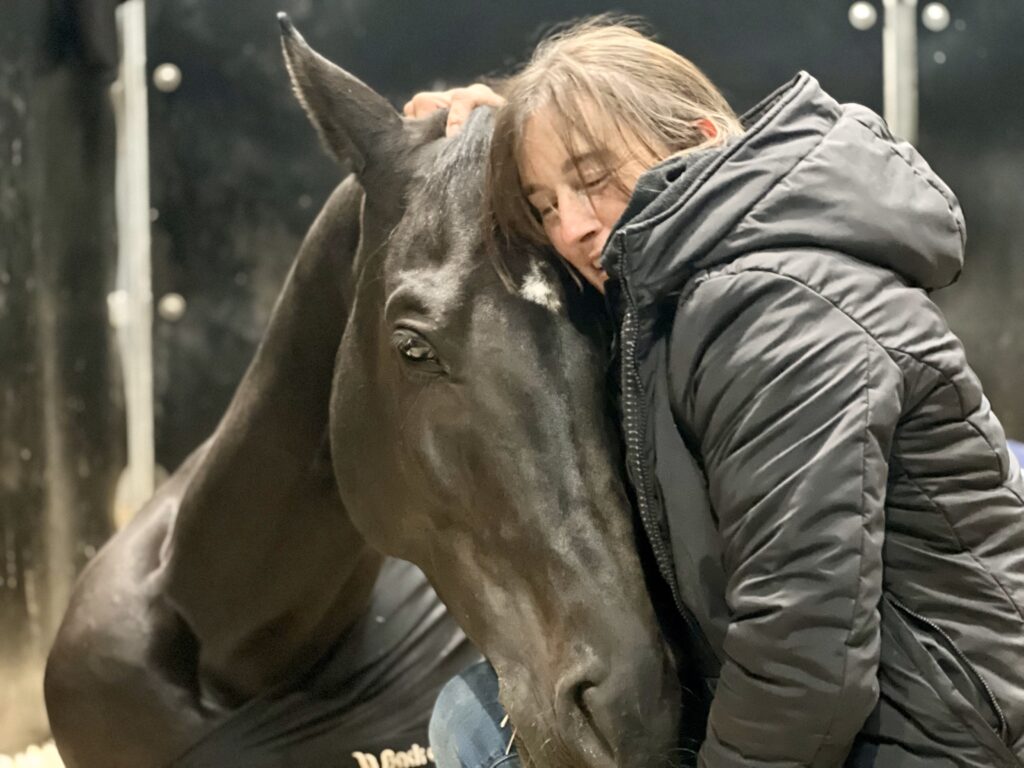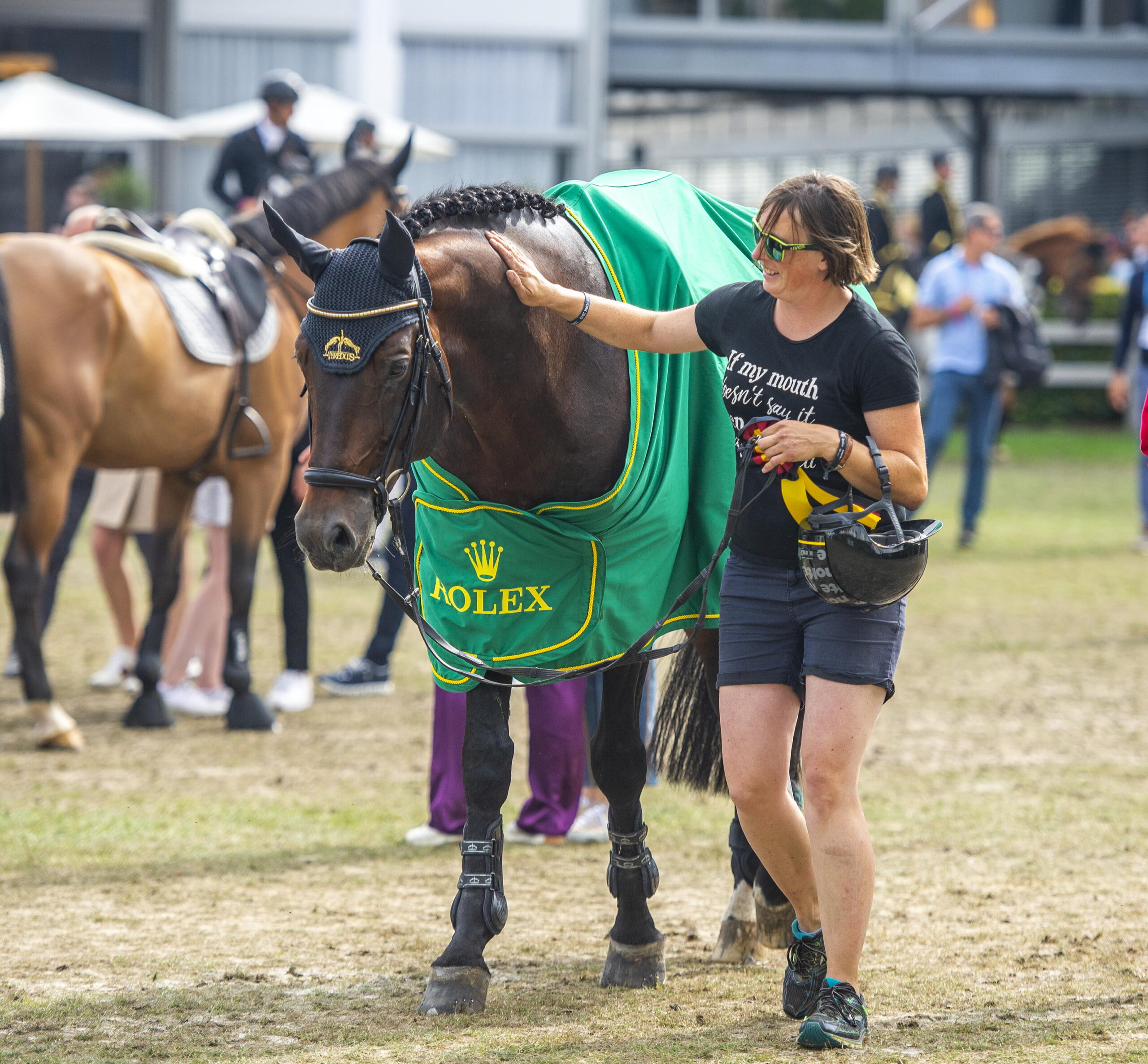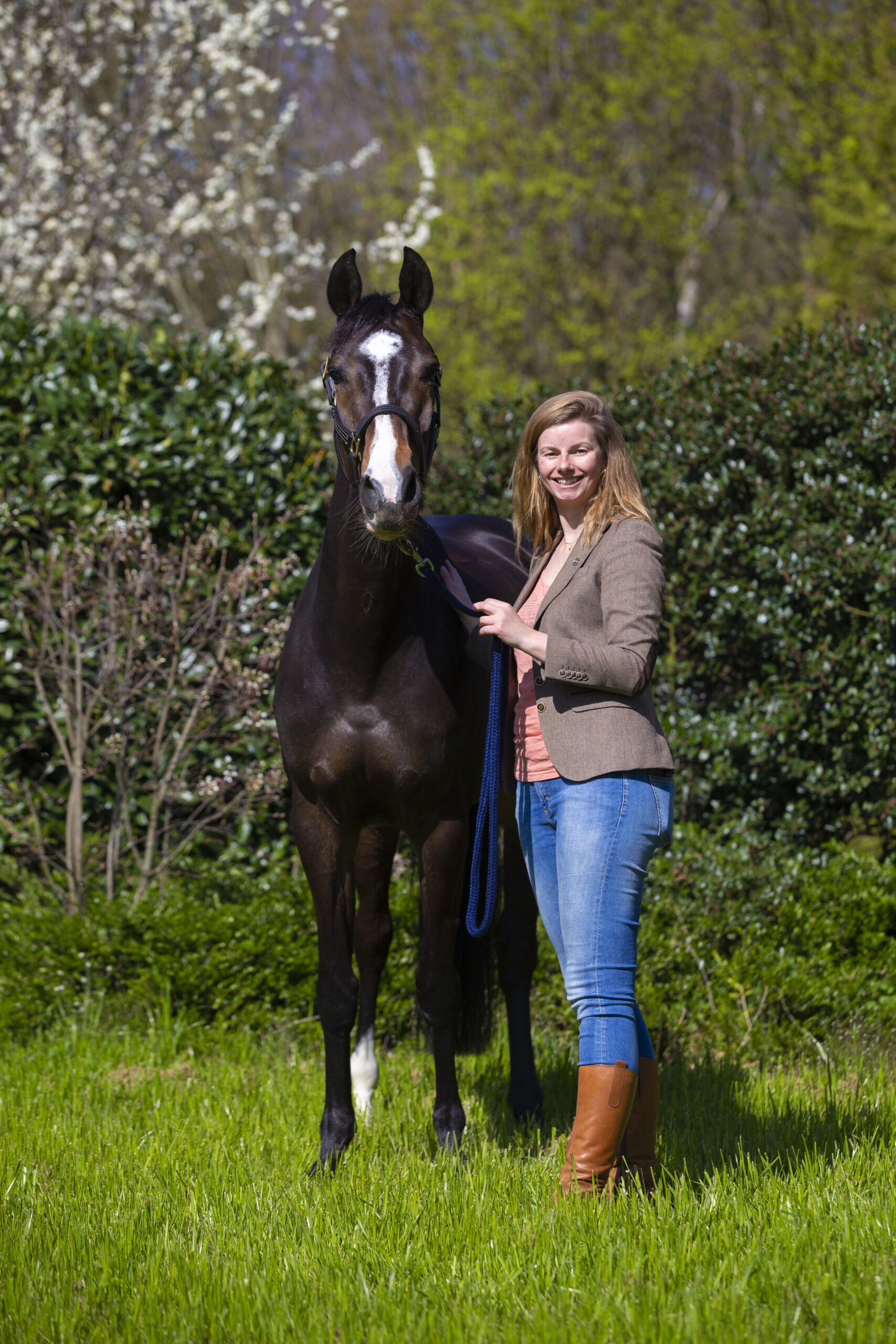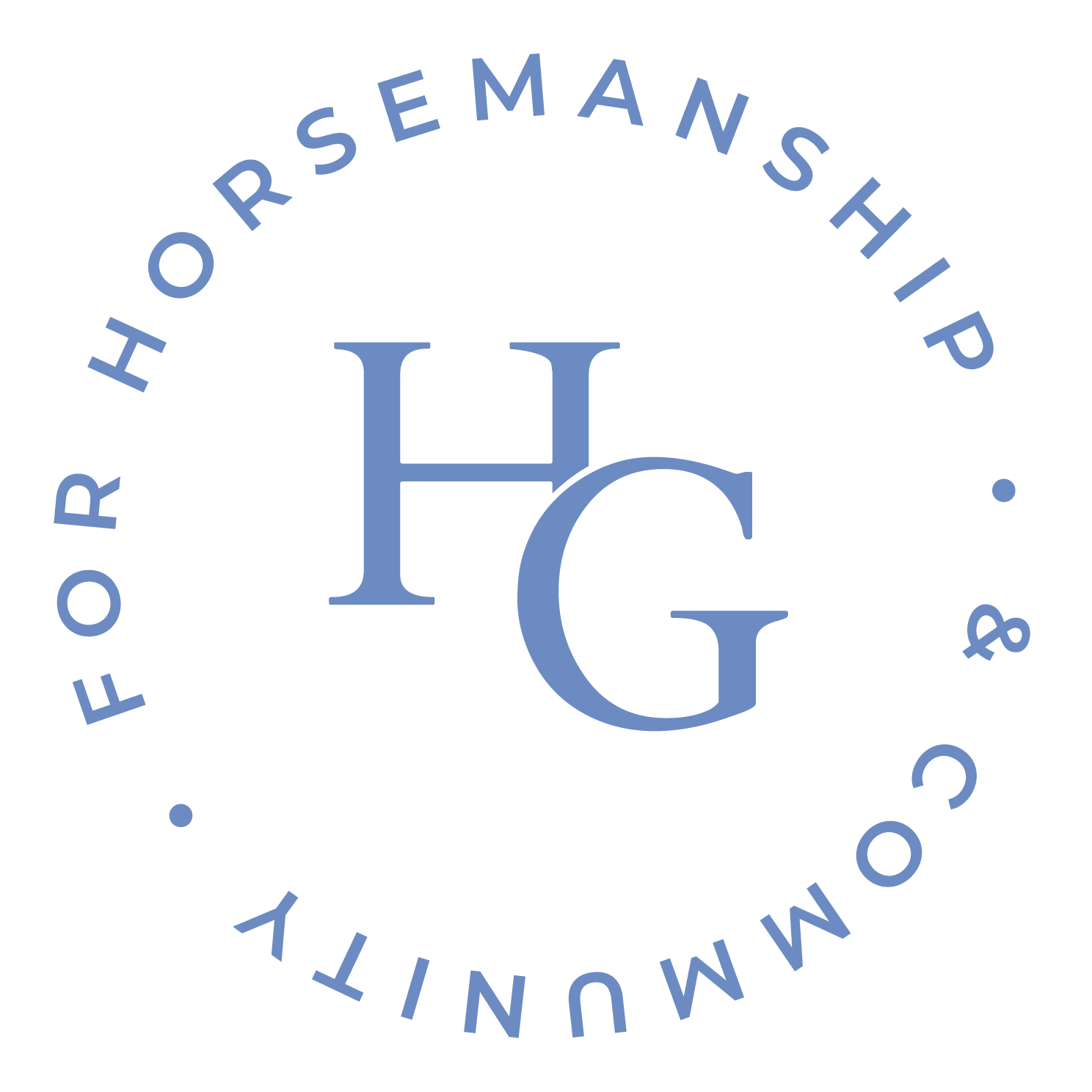Behind Marcus Ehning’s results with horses like Comme il Faut, Funky Fred, Misanto Pret a Tout, and Stargold stands his long-time groom Melina Obst, who everybody calls Mel. Ehning and Obst have worked together for seven years, tallying up together international accomplishments like two team silver medals at the European Championships and team bronze at the 2018 World Equestrian Games in Tryon, NC. This year, Marcus and Stargold won the coveted Rolex Grand Prix of CHIO Aachen (Germany), and at Indoor Friesland (the Netherlands), Obst was recognized as one of the three best grooms at the event. Then just on November 26, Obst’s charge Coolio 42 won the Longines FEI Jumping World Cup Madrid CSI5*-W with Ehning in the irons.
What is your background with horses?
I come from a family that has nothing to do with horses–neither of my parents nor grandparents, nothing. I just got into horses through a riding share [like a partial lease] here in Germany. A friend of my mother’s brought me with her to her horse. I started there, and took care of ponies and a horse. That was normal in the past; you would clean horses and put them in the field or ride them in the forest, with or without a saddle.
I was originally born in Belgium but grew up in Annerod, a town close to Gießen/Hessen in the middle of Germany. I started at a riding club in Gießen, and from there, I came to Wolfgang Schwanke, who was a breeder. His show rider was Jost Müller in Hünfelden-Kirberg, and with him, I enrolled in Breeding and Horse Management. After my final exam, I started my apprenticeship as a rider. Then I realized that riding alone is not my world. I have always enjoyed riding, but I didn’t want to ride and give lessons all day. I liked the overall work with the horses, so I stopped and started as a groom. I must say I also showed young horses. I liked it, but it wasn’t my thing for the future.
Tell me about the different jobs you’ve had.
I have worked for several riders in many different areas of Germany. In the beginning I had to do everything by public transport; I got my driver’s license late, when I was 25. I was working for Sevil Sabanci for a short time in 2005. I groomed for Markus Renzel for five years, with one break in between when I worked for Marcus Ehning. However, I was more at home then because I didn’t have a truck license. I didn’t really like to be at home so much, so I went back to Markus Renzel and also started the process of getting my truck license.
I did everything–national and international shows–and we brought five horses then. This is something I don’t do anymore; four horses is my maximum in order to give them the care and attention they need. I was all over Germany for a few years until I started grooming for [U.S. show jumper] Bliss Heers, who was based at Otto Becker’s stable. I traveled all over the world with Bliss, to all kinds of shows: from national to five-stars to tours like the Mediterranean Equestrian Tour in Oliva (Spain). It was an amazing three years, but then she wanted to change and move somewhere else. So I had to look for a new place for myself.
The show world is small, and you talk with many people, so I had a talk with Marcus Ehning and Kay Neatham, who was his show groom. She wanted to stay home more, so they were looking for someone new. Luckily, this time, I had my car/truck and trailer license. So, at one of the last shows I did for Bliss, Marcus asked me to start at his place. I’ve been there for seven years ever since.
We do everything: national and international, two-star and five-star, championships–just everything. It is also very varied for me, which I like. I’ve gotten to see young horses grow into the big sport. I also took over horses that were already performing at top level.
All the experiences that I have had led me to where I am now. I have done many different things with horses–even in-hand driving.
What have you learned through the years?
Basically, what I have learned–what my parents have taught me–is to always be self-reliant. I learned that from a very young age. I come from a family that has nothing to do with horses, so it’s even harder to work against that. I even try to repair things on my own truck if I don’t think it is too complicated. I learned to be self-reliant, but I also know when to ask for help.
I have friends that I’ve known for 20 years who are still standing by my side [and willing to help me whenever I need it]. My longtime best friend Marlen Schanwell, who grooms for Bertram Allen, has helped me often enough with doubling up for trips, for example.
What is it like going to championships?
I have done a German championship before I came to Marcus, but with him I’ve gone to important championships. My first big championship was the 2017 European Championships in Gothenburg, and since then I did a few. In general, I am not so nervous about championships; it is also a show with mostly one horse and too much time on one’s hands. For the horses, it is also good that I am more laidback, I think.
Watch Marcus Ehning talk to HorseGrooms about what makes Mel Obst special:
So you are at home about two days a week?
Sometimes, I am at home for just one day, depending on the next show. In the summer, I am often at home for two days, but now, in the winter season, I am away from home a lot. I now [beginning November] have Kronenberg (the Netherlands), Verona (Italy), Prague (Czech Republic), Madrid (Spain), etc. I have a lot of driving coming up (though not with many horses) and not so much time at home. For example, I will arrive at home on Monday from Verona, and I would like to leave on Tuesday to Prague because I have the vet check on Wednesday.
The Organization
You really have to organize everything up front: where you are going and where you are taking a break from driving. I have a lot of routine places where I stop to let the horses rest, but I still discover new stops.
Then I have to make a plan with Marcus about which horses are going to what show. After that, I look to see if I can travel with other grooms. The same is true when the horses are flying; I fly a lot with my horses. Then I also organize things with other grooms through WhatsApp groups, for example.
Different Routine at Home
If I am at home, and I have time off, that can be for one day or two days. But I am not only working at shows; the day after the show I usually have off, but rest of the time I’m working the normal stable routine at home which is totally different from show life. It means riding, preparing [tacking up] horses for the others, clipping, putting horses in the field, etc.
Sometimes on my days off I still travel, whether it is visiting friends or going to a festival or concert. I really like to be on the road. But sometimes it is good to also just sleep in.
Not Overdoing It
Every year at the same time, I have one week off where I don’t go to a show, and I go to an important music festival in Germany. Everybody accepts that, and I organize it so that somebody is helping Marcus at the show. Everybody needs time off, because otherwise I don’t think you can last long in this sport.
I learned in my younger years that you can overdo it to a point where you can’t function. Then you have to make sure that you don’t push it to that point again. That is what I tell other grooms: don’t overdo it; somebody else can also take care of certain things so you can have time off. Nobody can help you when you have reached the point where you are broken.
I have noticed through the creation of the International Grooms Association (IGA) two years ago that we now have a better understanding of what grooms want. Plus, we can share our experience there.
What can you tell us about certain grooming routines, like, for example, cooling down the legs?
I am not the person to cool the legs after every jump a horse makes. I don’t think you need to put ice boots on a completely healthy horse that jumped a 1.35m course or put it in a spa. I really believe that often less is more.
Twice a week at home the horses go in a spa, and I find that has more of an effect than using ice boots every day. At the end of the day, it is very easy to use the ice boots at the wrong moment and do more harm. I really believe with everything that less is more. It is more important that the horses are feeling well and that they are going outside and are being treated as living beings. You must make sure that they are having fresh air when you are at a show. I believe you have to give the horse the possibility to be a horse and also acknowledge the character of each horse and their preferences.
We have stallions, geldings and mares. The mares are particularly something else, and stallions can be complicated in that they don’t like other stallions around them or accept only one friend. Through the years, you learn to accept that you can’t change their behavior.
The Specific Time to Ice
I have certain ways of taking care of horses, but it does not mean that my way is the best way. Everybody has their own way. I would not tell somebody else they should do things like me. I mainly use ice boots at competitions. It depends on the horse, but when they have jumped in bigger classes and they need special care, I will use them. I don’t do it straight after they’ve finished the class but after they’ve cooled down a bit.
The freezer is at a really low temperature. I take the ice boots out before I wash the horse and put them on afterwards. That way, the skin doesn’t get burned by the freezing cold. I’ve also seen friends put a thin cleaning rag between the leg and the ice boot to prevent irritation. I only really ice the legs when the horse is finished, not when they need to come back for a second round or for the prize giving.
Most of the time, I use them for 20 minutes; I learned that this way the ice boots have the best effect on the tendons. It depends on the horse if I use them on the hindlegs or not. When I use them, I use them especially on the front legs. I don’t use ice boots at home. We have a spa that we use for the horses. You can program the water at certain levels of height; the temperature is around 0 degrees Celsius (32 degrees Fahrenheit). I put the horses in the spa for 20 minutes.
How do you take care of hooves?
It is important to understand that problems with the hooves sometimes come from the inside and not always from the outside. It might be that the horse has a deficit of Biotin, so you can start giving extra supplements.
Also, I find the right hoof dressing to be important. We are very happy with the Kevin Bacon’s hoof dressing. I use it at the end of the day when the horse is finished.
I also have horses that have poor hoof quality. For them, I use the hoof dressing before they start with everything so that they don’t get too much water in the hoof. It depends from horse to horse, but I use Kevin Bacon’s every day and have noticed through the years that it works the best to use it every day.

When your horses have shoes, you need to look after the sole of the hoof as well and put hoof dressing on there, too. When they don’t have shoes, you only do the outside otherwise the sole gets too soft in my opinion. We use hoof dressing, but once a day is enough; we don’t do it three times. We have a very good farrier from England, who I think has been with us longer than 15 years.
What about your tail routine?
It is a deadly sin if you brush the tail at home. It doesn’t matter how much straw or shavings are in the tail; no tail is being brushed! Only the manes and the top of the tail can be brushed. This works very well, and it keeps enough hair in the tail. Before the show, we wash the tail and put ShowSheen in, and then it is good to go. Plus, then you have really a lot of tail to work with. I could throw a brush at the head of a new person in our stable who wants to brush a tail. Our horses are robust and walk in the meadow every day, so you can imagine what their tails look like. But this system works for us, and I know other stables that work like this. These are things that people overdo, and again, less is more.
How often do you take the horses out of their stall?
This also depends on whether you are at home or at the show. Mostly we take them out three or four times over the course of the day. They are coming out on the longeline, being ridden, going out in the field if at home, grazing. During the indoor season, I try to go outside often for fresh air. That is already a lot of walking. This is also why four horses is enough at the show, but five horses are too much. Marcus also rides the horses about three hours before the class starts. The whole work schedule depends on the horse, and we talk the day before about the schedule of the horses. I have the horses out of the box as much as possible and doing that makes the horses happier.
Marcus rides a lot of stallions. How do you keep them in shape?
I haven’t had any stallions that were extremely crazy. I must also say that our stallions are out in the field every day. All our horses have time in the field every day. That is why they are easier to handle. Every now and then, we have a stallion who is not so keen on neighbors, but you have to respect how they are. Find out what they like and don’t like, and if there is a certain horse he doesn’t like, then you don’t put that horse next to him.
I never really felt I needed to feed stallions differently than my other sport horses. For sure, you have to give them more during the breeding season. When the stallions are active as a breeding stallion, they don’t go to shows; when they are in competition, they stay in competition, and when they are active in breeding, they stay in breeding. When they lose weight from stress, you give them a bit more feed. We give, for example, Fibre-Beet from Pavo or WeightLift, which they brought onto the market this year. Sometimes you just have to try it out to see what they like. Another option is the old-school way of beet pulp, but that has a lot of sugar.
In regards to handling, I try not to keep other horses away from the stallions. I respect that they are stallions. I don’t use the chain because, at one point, the horses become head-shy in my experience. I always have a whip with me. You have to find out if he is a bit scared or wants to play the boss. You cannot treat all the horses the same way.
How has the standard for grooms changed in the last ten years?
I could talk about the last 20 years. There’s a huge difference when I compare my show calendar from 10 years ago with now. The number of shows is extreme. We have to split up a lot, and not everybody is in the position to have two grooms (especially since you also don’t always need two people). I drive all year round to shows. We always find a solution, but it has become more work because there are more shows. This means a lot of driving, and sometimes you still feel like you are at the bottom of the chain for a show.
Conditions for Grooms
The conditions for grooms are already much better than they were. We are being taken more into consideration now. Some things have changed, but there is still a long way to go. The indoor season has started, and there are still shows where the jumping classes start at 10 p.m. and the first class the next day starts at 8 a.m. They are trying to change this, but it is a long road, and the problem is that the FEI can’t just say, “We change this and that.” They also have to take organizers, sponsors, and owners of horses into account. There are so many stakeholders. I have seen a bit of the background now, thanks to the International Groom Association, about why everything takes so long to change. And in some areas, the demands of some grooms are very high.
There’s Still a Lot to Improve
I’ve noticed some two-star shows are better than five-star shows. Some shows are made more for the spectators than for anything else. These shows don’t do justice to the horses and grooms. That is why there are a lot of grooms who quit after doing this for many years. It takes a long time to get things changed. There are still shows where it is 30 degrees [or high 80 degrees Fahrenheit], but they don’t have power so that you can put fans on. Riders partly see and understand this, but they want to avoid stress with the organizers. There is still a lot that can be improved.
What advice would you like to give young or new grooms?
Take a look at experienced grooms and see how they do certain things. Don’t think that you know everything or that you can do everything better. Keep asking questions; nobody will harm you for asking questions. I don’t like it when young people think [grooming methods] should be completely different. They can learn from the experience that we have. Plus, learn to work together with other grooms and not against each other–that makes this work much easier.
Feature photo courtesy of Danielle Smits for Arnd.nl
I’ve had a passion for breeding show jumping horses for over 30 years. I spent nine years looking after broodmares. After that, I wanted to learn more about the bloodlines of top sport horses and was given the opportunity to work as a groom in a top stable in Germany. It was here that my appreciation for grooms began, back in 2008.
So far, my journey as a groom and journalist has given me wonderful memories. I have had the opportunity to be close to some amazing show jumping horses. I have worked as a groom in Belgium, Germany and the Netherlands–long enough to get to know the horses, but not long enough to become a very good groom. I am now better at writing articles. HorseGrooms is a very good initiative to get support with many questions and to strive to become a better groom.


